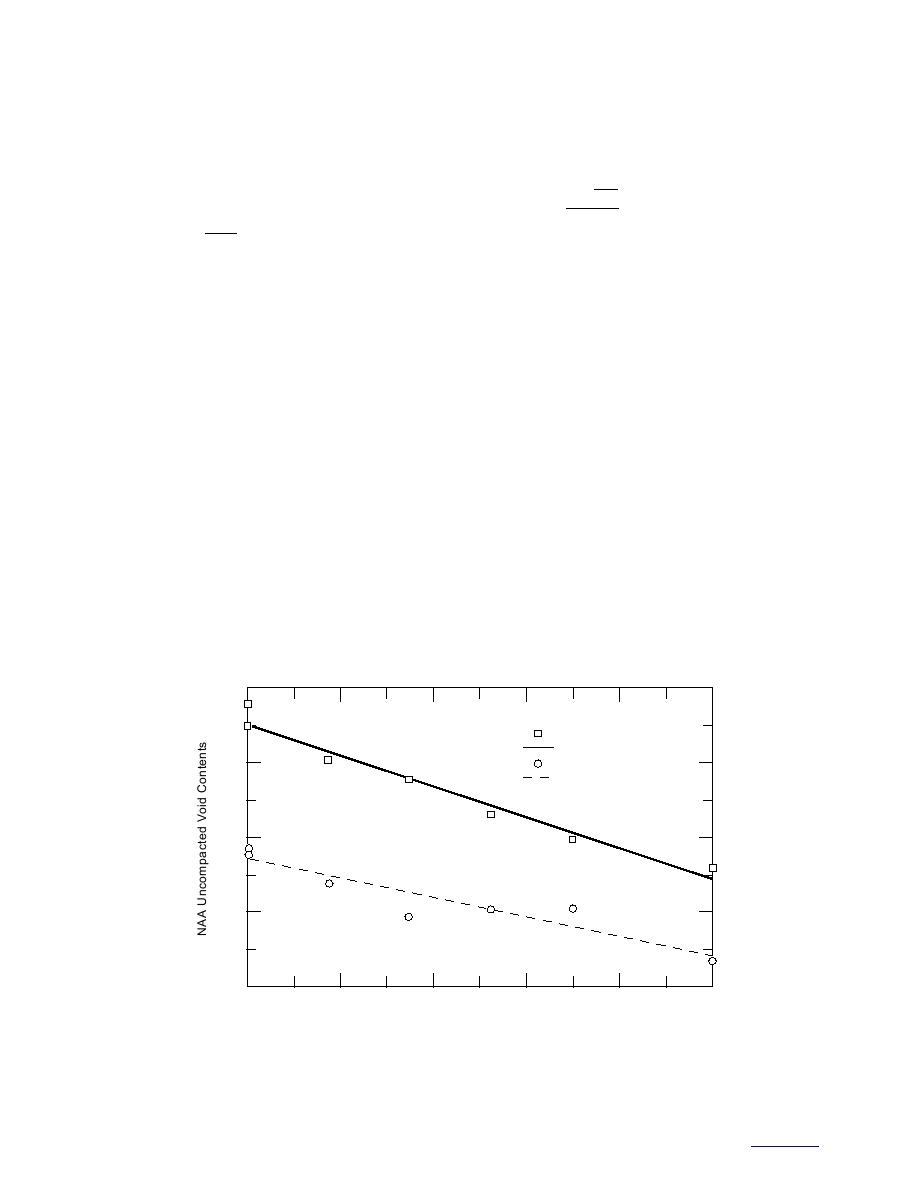
spherical glass beads) with a known packing spe-
weight of aggregate together with the bulk specific
cific gravity, Gps. The other sample is the test par-
gravity of the aggregate are used to calculate the
ticles for which Gpx is sought. Gpx is a function of
uncompacted void content:
the ratio of the weight of the test particles to the
M
standard particles:
Vcyl
Gsb
UCV =
100
(5)
Vcyl
ΣWx
Gpx =
(4)
G .
ΣWs ps
where UCV = uncompacted void content (%)
Vcyl = volume of cylinder (cm3)
A schematic of the pouring test is given in Fig-
M = mass of aggregate in cylinder (g)
ure 7. Typical results on the effect of different aggre-
Gsb = bulk specific gravity of aggregates.
gates on the specific rugosity are shown in Figure
8. The specific rugosity increases as the angu-
Figure 9 shows the UCV increasing with increas-
larity and roughness increase. One drawback of
ing percent of crushed fine particles. Method A in
this test is that it is time-consuming because tests
Figure 9 refers to a standard gradation of the fine
have to be done on individual sieve sizes.
aggregates (i.e., the gradation of selected sieve
sizes), and method C refers to the gradation of the
minus no. 4 portion of the as-received material.
Uncompacted voids in aggregates
The standard gradation in method A consists of a
(ASTM C 1252)
This test method is similar to the specific rug-
gradation made from a known weight of material
osity test described above. The exception is that
from specific sieves.
the aggregates need not be separated into various
Aldrich (1996) modified this test for determin-
sieve sizes. The test for fine aggregates has been
ing the uncompacted void content of coarse
standardized by ASTM C 1252 (1995), Standard
aggregates. A schematic of both the fine and
Test Methods for Uncompacted Void Content of Fine
coarse aggregate test apparatus is shown in Fig-
Aggregate (as Influenced by Particle Shape, Surface
ure 10. The test coarse aggregate passed the 19-
Texture, and Grading). Initially developed by the
mm sieve and was retained on the no. 4 sieve. A
National Aggregate Association (NAA), it
test protocol similar to that used in ASTM C 1252
involves allowing the fine aggregates to fall freely
(1995) was developed for the coarse aggregates.
into a calibrated cylinder from a specified height.
Utilizing method 1, 5000 g of as-received material
The excess material is removed and weighed. The
is used, or individual aggregate sizes ranging
48
Method A
R2 = 0.963
44
Method C
R2 = 0.868
40
36
32
0
20
40
60
80
100
Percent Natural Sand in Fine Aggregate
Figure 9. NAA particle shape and texture void contents vs. percent natural sand in fine
aggregate
7
to contents





 Previous Page
Previous Page
